Introduction to the Shenzhen paradigm shift
In the mid 1990s, OMA, the architecture office led by Rem Koolhaas, published the book S,M,L,XL with the article ‘The Generic City’. They followed up a few years later with the book Great Leap Forward. Both publications describe the Pearl River Delta and Shenzhen’s urbanization issues in particular. [1] As a result of OMA’s analysis, Shenzhen became the focus of discussions and research on topics such as rural migrants serving the urban manufacturing industries [2]; the development strategy of large-scale infrastructure and government investment in large-scale events [3]; the phenomenon of urban sprawl; the rapid urbanization process of increasing urban density throughout the city [4]; urban villages as examples of informal planning [5]; and lastly, Shenzhen’s goal to become a global creative city. [6]
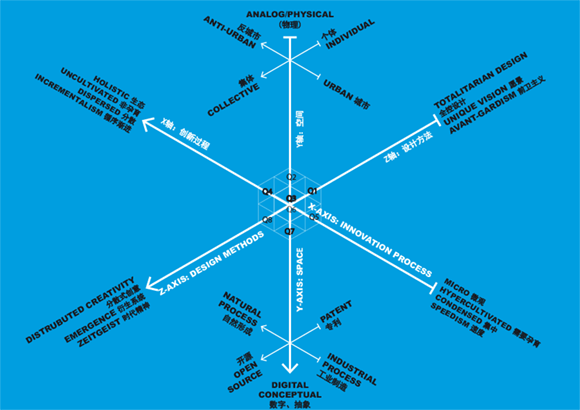
As both observers and practitioners in Shenzhen, we recognize a dramatic paradigm shift over the last few years from top-down planning, physical construction and industrial development towards a new wave of experimentalism that attempts to tackle contemporary urban complexities, develop holistic social growth and steer new social values not solely dependent on economic metrics. For example, in the urban village discourse, we argue that the urgency of discussing informal development should go beyond the physical structure of the urban village and needs to include the understanding of an intangible network of communities across the entire city. In regard to urban innovation, we are less interested in the gentrified post-industrial clusters (creative parks), but more in the new wave of lower-barrier collective innovation processes, maker movements, or the mass amateurization of invention, innovation and technology in product development in marginal urban spaces. Regarding urban development strategies, we are more concerned about urban regeneration, in which new developments are sandwiched between super complex social, political and capitalistic desires. And lastly, the collective and collaborative innovation forces in Shenzhen (Shanzhai innovation) are creating a phenomenological antithesis that will eventually form an alternative to the legacy era in which people believe that one elite genius (like another Steven Jobs), can single-handedly affect great social change.
In this article, we argue for a new, intangible and implicit value creation mechanism based on the achievements of the Shenzhen grassroots community over the last decade. Such a mechanism consists of a set of actions that oscillate seamlessly between innovation from grassroots communities in Shenzhen (Shanzhai culture), from new citizens and their lifestyle, and from new forms of urbanism based on novel types of collaboration between government and social entrepreneurs. Furthermore, we think an important future challenge for this new innovative urban economic system is to become truly sustainable.
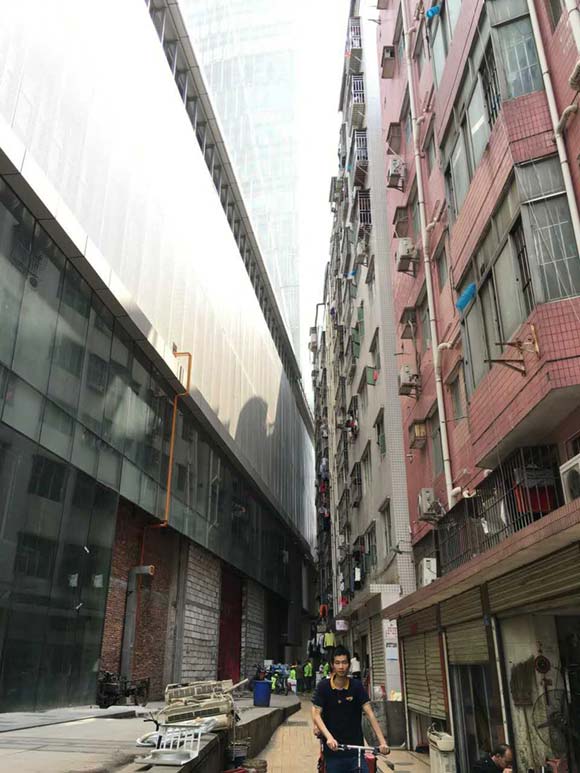
New innovation from grassroots communities
The Shenzhen’s original role as the window through which knowledge was imported and products were exported to the world was preliminarily based on its unique geographical position in the Pearl River Delta (PRD) city cluster. The synergy between Shenzhen, Guangzhou, Hong Kong, Macau, Zhuhai and Dongguan on the one hand formed a continuous PRD megacity morphology, and on the other hand created an effective and complete social-industrial ecology. It included knowledge transfer among local higher education institutes, with specific support in the areas of trading, finance, manufacturing, labor, and policy from multiple municipalities. When we look back on the last decades and ask ourselves what the PRD city cluster actually gained, apart from a small group of people getting rich and a huge problem with pollution, we have to conclude that no extra value has been added. [7] Moreover, this complete social-industrial ecology is currently being deconstructed by the relocation of manufacturing bases to inner China, Southeast Asia and Africa. Therefore, the original PRD ‘bay economy’ dream needs to be redefined and Shenzhen within that shifting ‘bay economy’ ecology also needs new counterparts for cross-pollination. [8]
There is a general expectation for Shenzhen to become or trigger the next Silicon Valley in Asia, a place that would lead technological innovation and start-up culture in China. [9] However, before we get too excited about ‘learning from Silicon Valley’ (a place that attracts ubiquitous maker spaces, incubators, start-up companies, venture capitalists and other subsidiary startup services), perhaps we should first take time to reflect on Shenzhen’s current creation paradigm before we speculatively identify the next sexiest global competitor.
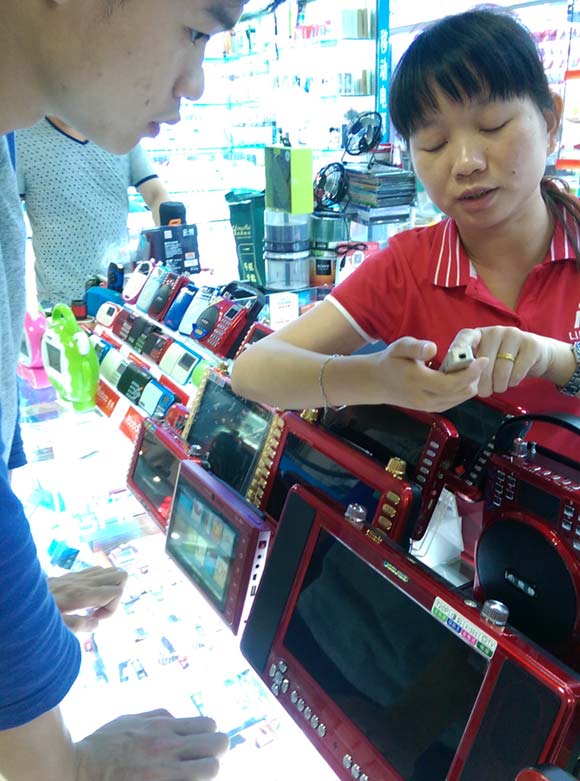
Undeniably, Shenzhen has moved from manufacturing to prototyping, incubation and cross-pollination with entrepreneurs and their academic partners, directly or indirectly from Silicon Valley, Cambridge and the Boston Tech Belt, who advocate impactful business and smart technology development. However, this represents only one side of the coin: namely, a more advanced model of knowledge transfer used by the global elite to further exploit opportunities in the Chinese capital market and local small scale enterprises.
Seldom do people discuss the other side of the coin: Shenzhen being a unique innovative city with the intelligent property production model of Shanzhai. [10] Shanzhai is a manifestation of collective innovation and distributed creativity, an intelligent evolutionary process through time that involves many inventors and users creating the most dynamic, micro-scale and localized solutions. Shanzhai innovation challenges the traditional avant-garde innovation model with thousands of grassroots innovators in Shenzhen. The evolution of Shanzhai innovation originated from simple manufacturing activities in developing regions and the grassroots community. But in contrast to entrepreneurs and governmental institutes, the grassroots community captured the know-how (the skills to make), but not the knowledge (the intelligence to create), behind innovation to create the most sensitive technologies while facilitating the smartest technologies developed by other inventors. [11]
Therefore, we can argue that the biggest gain over the last decade of industrialization in South China is not the capital flow for capitalists (return on investments), and institutions (taxes), alone, but more intangible: namely, all the experiences collectively owned by those from the grassroots community who actually execute production. The problems of tapping into the value of this collectively owned experience (or what we call ‘innovation know-how’) are of course manifold. For example, no one understands how exactly value is created during the process of gaining know-how. However, one thing is undeniable: Shanzhai, which is synonymous with the innovation know-how process, is far more resilient than any existing economic structure based on capitalist rules, because it is based on the collective of millions of innovators instead of relying on a monolithic knowledge management system that can fail easily due to one wrong decision at the executive level.
What is currently missing in the Shanzhai innovation process? We studied the entire evolution, from copycat (late 90s), to DIY culture (early 2010s), to amateurism in innovation (2010s), and ultimately to the so-called ‘design-in-China’ (now). What we discovered is that it isn’t necessary to further legitimize the process to make Shanzhai more real from the entrepreneurial perspective, nor is it necessary to help it grow from the elitist perspective, simply because it has already incubated thousands of small-scale businesses and is influencing urban elites’ lives on a daily basis. When Alibaba and Taobao.com are criticized by the international media for enhancing the sprawl of illegal counterfeit products globally, what is needed is not millions of certifications of copyrights from those huge amount of grassroots innovators, but a reliable, transparent and social-value driven system to enhance the open source grassroots innovation process. Therefore, we must quickly develop such a system in China in order to link the network between grassroots communities and the elite class.
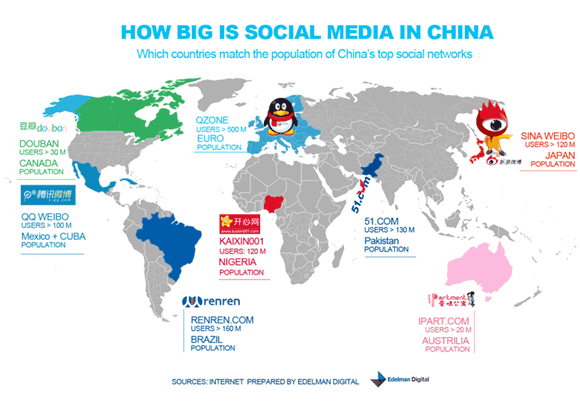
New citizens, new digital infrastructures and new social values
In Shenzhen, the changes in urban landscape and trade policies are remarkable, just as much as the shift in the younger generation’s civic mindset, which has become the market’s major consumer force. Open source value is of more importance to this new generation than the centralization of intellectual property. Moreover, thanks to the proliferation of social networking platforms like WeChat, QQ, Douban and Renren, which are powered by affordable communication hardware and software (usually modified versions of international products), information is disseminated with such efficiency that even the infamous censorship agents have trouble keeping up. Therefore, these new values and new platforms focus urban and social development on new issues like trust and social inequality.
A lack of trust in commodities and food safety has been among the top household concerns in China for years. This has become evident through the numerous complaints made by Hong Kong citizens about the shortage of imported and locally produced products because of the influx of mainland tourist consumers. However, things have recently started to change. In 2015, a steep decline in both export and import was reported and analyzed by authorities such as the Wall Street Journal and McKinsey & Company. [12] This economic transition implies an increasing demand for trustworthy, dependable goods produced within the country. Not surprisingly, resourceful and flexible Chinese entrepreneurs have responded to this demand very quickly. By embedding data and analyses into social platforms such as the Weibo stores, entrepreneurs advocate complete transparency of their supply-chain such as source of materials, well-being of producer communities, manufacturing processes and handling precautions. Consumer verification and accreditation systems are also taking over their corrupt predecessors through source tracing technologies. These trends demonstrate that commitment to social responsibility and business transparency has become the critical factor to win consumers over.
Another important concern is social inequality. Issues related to poverty in areas like the western provinces are brought to the general audience through the same social platforms. Often rendered with melodramatic details, such informal journalism quickly captures the attention of young, educated Millennials who wish to generate positive changes. For instance, more than half of the followers on Tencent Gongyi (a crowdfunding platform for social entrepreneurial initiatives), were born after 1990. On 14 August 2015, $100,000 USD was raised within five hours to support an abandoned child living in rural Sichuan, after an emotional letter titled ‘tears’ (claimed to have been written by the child) was released through a local foundation. [13] This is one example suggesting that when they are given the proper channels, Millennials can be expected to exercise their underestimated philanthropic power.
To summarize: what is generally happening in China’s urban development is ideological change, and taking Shenzhen as a case, we are on the tipping point between a quantitative-driven physical infrastructure boom and the development of a quality-driven social infrastructure. Shenzhen’s contemporary context suggests that the city’s economic and civic values need to be realigned, in order to support long-term urban development. In fact, the Communist Party of China has already recognized such needs. By studying China’s 13th Five-Year Plan (FYP) for 2016-2020 and the latest guidelines on public-private partnership (PPP) in China, one can see that China’s latest economic policies tend to facilitate rather than regulate businesses with social missions.
The 13th FYP aims at a longer-term strategy for economic growth by highlighting all the efforts and social investment needed to support social initiatives and social innovations, while the previous FYP aimed at public investment in infrastructural development and urban growth. The PPP model is also shifting from co-creation between government and private sectors of physical infrastructure, towards outsourcing social services to private enterprises. Together, the 13th FYP and PPP are spearheading a totally new urban development driven by social entrepreneurism. [14]
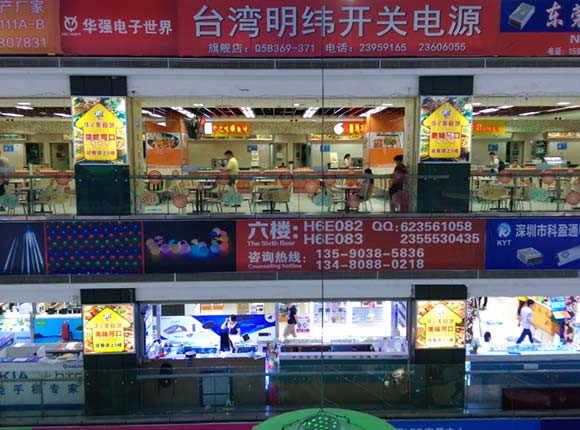
New entrepreneurism scaling up social innovation in Shenzhen
The construction of a new trust economy needs the massive scaling up of a huge amount of small-scale social innovation. Shenzhen was planned as a typical entrepreneurial city, which means the government let entrepreneurs co-manage the development of the city. For example, Shenzhen’s urban planning practice has never been very detailed because it had to create room for foreign investments to benefit from flexible urban land trading and this has allowed the city to boom from a largely rural zone into a metropolis within merely three decades. But it has also created many policy vacuums for entrepreneurs to collaborate in areas such as the urban villages and the Huaqiangbei electronics market. Because land zones are defined too generally, land dedicated to one use often ends up serving another, unintended use. While Shenzhen’s resourceful grassroots entrepreneurs can adapt these grey zones for their individual benefits, the communities in the urban villages and the tenants of Huaqiangbei are hardly organized. When residents can’t self-organize and collectively make decisions, their community will easily become susceptible to economic dynamics or the slightest policy changes.
Social entrepreneurship is able to intervene in this grey market, informal intellectual property development and problems within the grassroots communities, because it allows for more inclusiveness amongst stakeholders in society to participate and gain value from further economic developments. A successful social entrepreneurial model sets a shared agenda and necessitates community building as a collaborative effort between the enterprise and its end beneficiaries. They are both accountable for building reliable, long-term connections with stakeholders in the government, in the village and along business supply-chains.
In Shenzhen’s case, as one of the most social-entrepreneurship-friendly cities in China, social entrepreneurism not only contributes to the long-term, consumer dependent economy pursued by the Chinese government, but also enables grassroots innovators to build reliable connections with their suppliers, consumers and each other. Much like the Interventionist Urbanism movement in the US, when communities with common agendas are formed, they are motivated to not only look out for themselves, but also to actively transform their surroundings for desired lifestyles. This social foundation, largely driven by entrepreneurial (but not political) intentions, can quickly leapfrog grassroots actions to municipal acceptance. Therefore, the core urban value of social entrepreneurism lies in its means to empower grassroots community agencies, build community capacity and provide a social infrastructure for self-organization, in order to improve the communities’ surroundings, lifestyle and economic resilience.
What is the current status of social entrepreneurism in Shenzhen and how can it be supported to become a sustainable movement instead of merely a trend? In 2015, many institutions and organizations held their first conferences in social entrepreneurism with a focus on particular social topics like healthcare, rural development and education. [15] On the intermediaries’ side, Tencent QQ, a Shenzhen based telecommunication network provider, initiated Tencent 99, a public fundraising event that serves social entrepreneurs of all scales. The event raised 150 million RMB on just the first 3 days of its 99-day schedule. Global authorities in the social entrepreneurial sector, such as the British Council, have frequently engaged with Shenzhen policymakers and philanthropists for knowledge exchange and investment opportunities. Successful social tech accelerators from the UK, such as the Bethnal Green Foundation, have been invited to numerous events to share their experience and expertise. On the entrepreneurs’ side, Shenzhen has become the birthplace of diverse types of social entrepreneurship due to her political friendliness and attention to social development projects: individuals who run small-scale programs in need of small capital to either start or sustain good intentions, and individuals who would reject funding coming from strong profit-making intentions. On the government’s side, Shenzhen and local enterprises have co-funded startup foundations with private Corporate Social Responsibility programs to tackle major agricultural and climatic challenges in the Northern and Western provinces of China. All in all, Shenzhen is at an exciting, infant stage of social entrepreneurism.
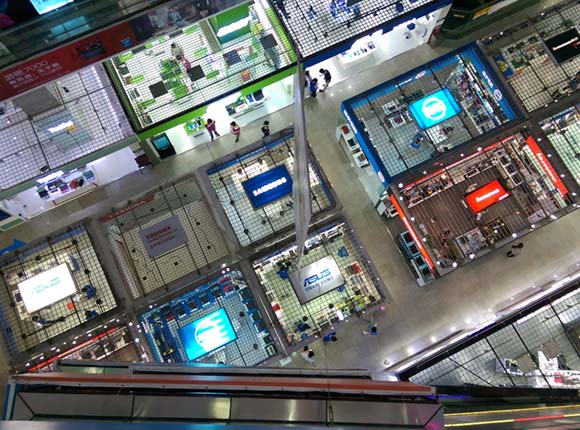
Challenges to build soft infrastructure for sustainable growth
The first step of the solution really lies in the entrepreneurs’, investors’ and grassroots communities’ ability to comprehend their dynamic urban context equally, knowing that there is no textbook or imported knowledge that can teach them. Considering all of them as agents for change, they need to understand what the impact of the resources they invest will be, and the actions they will take. This may sound similar to a straightforward, two-step cost-benefit analysis, but in reality it is very much the opposite. It requires significant efforts to break down all the assumptions, identify major risks and avoid planning pitfalls to analyze the impact of actions. When agents overlook the context and focus too much on their own contribution, too often unintended events scupper their plans. In fact, many start-up social entrepreneurs have difficulties in securing funding because they tend to use very binary perspectives to explain the causation between their actions and impact. Not only is such a practice a pitfall to fundraising, it also prevents positive change because there’s no collective learning experience.
Moreover, the financial model for social development is rapidly transforming because of the urgent need of both the government and the market to stabilize society after the brutal, nationwide economic boom in the last decades. Both philanthropic and corporate businesses tend to center their economic model on social value creation, but there is a severe lack of integrated tools to generate, measure and predict impact (social returns of investment) and revenue (returns of investment) at the same time. More importantly, government investments and corporations cannot reach the social entrepreneurial level, because there is no easy measurement for them to judge on a large scale how effective the projects are. For social entrepreneurism to fully blossom, Shenzhen needs large-scale social impact assessment tools for its social entrepreneurs, investors and grassroots communities, and this requires a huge government investment.
We would therefore like to tackle this problem from the ‘sensitive technology’ perspective, i.e. technology that is able to sensitively adapt to local and indigenous cultures and lifestyles. Moreover, the implementation of such technology and capacity building within communities should also be highly scalable and affordable. Therefore, the technology is able to enhance value co-creation by both the local community members and social entrepreneurs. Lastly, we need to lower the barrier of complex impact measurement activities so that everyone can benefit from it. [16] Since the socio-economic realities of Shenzhen and China are so dynamic, social impact concepts and measurement knowledge are context- rather than content-based. And since impact knowledge is not stable, mechanical learning from institutions or a narrow pool of experts doesn’t equip us to solve real world problems effectively. Therefore, much like the Shanzhai culture, Wikipedia or OpenStreetMap [17], our goal is to create an open source platform, that crowdsources solutions. Here, knowledge-based impact solutions will be shared among all stakeholders.
Perhaps the grassroots innovative Shenzhen is not an end, but a means to an even more important end. Pondering how we can contribute to the next phase of innovation in Shenzhen inevitably triggers our imagination about what this next phase will do for its citizens, especially the grassroots community that has been underrepresented for too long. Moreover, both the means and its end will require much collective deliberation, and it will only precipitate through the experiences of piecemeal, but accumulated undertakings. To facilitate this process, a holistic and inclusive knowledge structure needs to be constructed and supported by social entrepreneurs, impact investors, policy makers and knowledge generators, all of whom have the power to steer the wheel of urban and social development. Perhaps it’s appropriate to use the analogy of an egg for Shenzhen: impacting it from the outside would provide food for others, but impacting it from within would breed a life of its own.
[1] Chuihua Judy Chung, Jeffrey Inaba, Rem Koolhaas and Sze Tsung Leong, Project on the City I: Great Leap Forward (New York: Taschen, 2002); OMA, Rem Koolhaas and Bruce Mau, SMLXL (New York: Monacelli Press, 1995).
[2] Shenzhen’s migrant population is a very general concept and doesn’t reveal the growing diversity of society. In 2012, Shenzhen had a population of 11,000,000 people of which around 8,000,000 were migrants and 3,000,000 were locally registered or had urban hukou status. For more on this, see: Shenzhen Statistic Year Book 2012. The number of migrants with a higher education is currently increasing and is predicted to outnumber low-skilled migrants by 2020.
[3] In 2011, Shenzhen hosted the Summer Universiade, an Olympics for international university students. The Shenzhen government paid 13.8 billion RMB to construct 22 stadiums and renovate 36 stadiums. Moreover, 157 km of new subway railway was constructed to link downtown Shenzhen with new towns in the outer districts. However, giving shape to the post-event re-use of the stadiums and convincing urban residents to move to the new towns is currently problematic for the government.
[4] Many introductions about Shenzhen start with the statement that Shenzhen underwent rapid urbanization and turned from a fishing village into a megacity in only 30 years. However, the city is currently literally running out of building plots outside the ecological control zone. Shenzhen urbanization can now only happen by regeneration and densification.
[5] Urban villages are one of the most popular topics to study and design amongst national and international designers and academics in order to understand, celebrate and intervene with the informal development of the city. However, the majority of this research focuses very much on the description and design interventions of the physical and spatial quality of the urban village.
[6] In 2008, Shenzhen managed to become the first Chinese city to bear the name City of Design given by UNESCO. Art and cultural activities occupy many industrial clusters in the city.
[7] Deng Xiaoping first proposed ‘Letting a small group of people get rich’ in the late 1980s, as a principal of the Open Door Policy and as a transition stage from planned economy to market economy.
[8] Bay economy originally refers to the economic alliance in West Coast America, radiating from San Francisco and Silicon Valley to the surrounding area. This concept has been recently borrowed by Shenzhen to describe the city alliance around PRD and Shenzhen Bay. See government document: http://www.sznews.com/zhuanti/node_175946.htm?COLLCC=1719126576&, retrieved on 10 January 2016.
[9] See: http://startupbeat.hkej.com/?p=20735, retrieved on 14 August 2015.
[10] Shanzhai literally means ‘mountain cottage’. It is a negative annotation to describe counterfeit products. For more information about Shanzhai: http://patterns.ideo.com/issue/Shanzhai/
[11] We would like to separate two types of innovation activities: one based on knowledge, referring to the intelligence-based development of new ideas, new products and new solutions with systematic and methodological processes, the other one based on know-how, which refers to a quick learning of how to make existing ideas, things and processes slightly better to adapt to a smaller scale problem. In other words, knowledge-based innovation requires degrees, and know-how-based innovation requires experience.
[12] See: http://www.wsj.com/articles/china-exports-imports-drop-in-july-1439000442, retrieved on 30 August 2015.
[13] See: http://education.news.cn/2015-08/20/c_128147338_4.htm, retrieved on 21 June 2016.
[14] The term ‘social entrepreneurship’ was first adopted in sociological analysis in the UK during the 1970s and refers to the idea that entrepreneurship could shift perspectives in society and reap social benefits. It has become a widespread global movement that encourages the adoption of business approaches to solve social problems and vice versa.
[15] For instance, the first China Social Enterprise and Social Investment Forum (CSESIF) was held in Shenzhen in June 2015. This two-day event covered topics like impact investment, impact assessment, rural development, healthcare, elderly care, education and general social well-being. Speakers and exhibitors from both local and global authorities in the social sector included the British Council, Global Development Incubator and the Jack Ma Foundation, among numerous other organizations.
[16] There are more than 150 impact measurement strategies and tools. They are developed by many organizations globally. Such knowledge is very rarely accessible to the general public. For an impact measurement catalog, see: https://iris.thegiin.org/
[17] Other well-maintained, popular and open source platforms include: Open Source Ecology for village construction, Scikit for Machine Learning (http://scikit-learn.org/), OpenDroneMap (http://opendronemap.github.io/odm/) for mass cartography and Arduino for hardware, etc.


